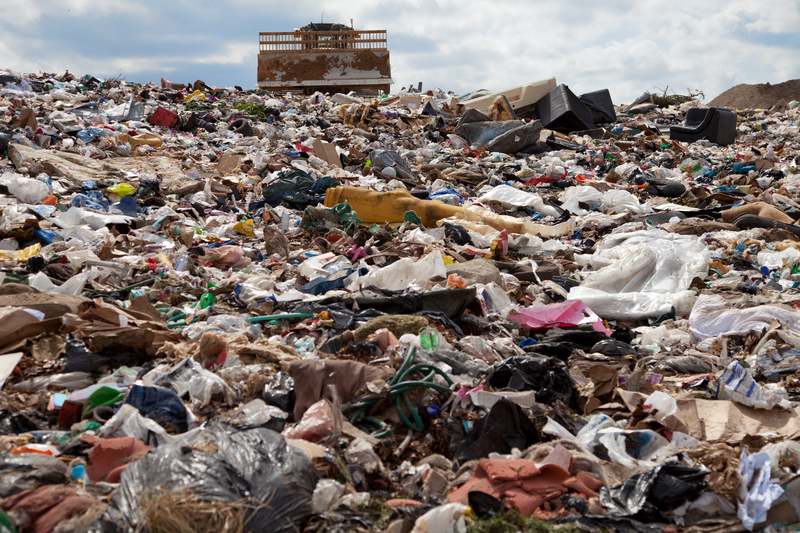Tips for Eco-Conscious Disposal of Pots and Pans
In today's world, making sustainable choices has become more important than ever. As households aim to reduce waste and adopt environmentally friendly habits, many people are left wondering what to do with their old or damaged cookware. If you have worn-out frying pans, warped baking sheets, or outdated pots lying around, don't just toss them in the trash! This comprehensive guide outlines eco-conscious disposal methods for pots and pans, helping you make greener choices and protect the environment.
Why Proper Disposal of Cookware Matters
Millions of pots and pans are discarded each year, and unfortunately, many end up in landfills. Cookware, especially nonstick or metal varieties, can take hundreds of years to decompose. By choosing eco-friendly ways to dispose of your cookware, you contribute to resource conservation, reduce landfill waste, and help protect natural ecosystems.
- Environmental Impact: Traditional disposal methods lead to harmful pollution and resource depletion.
- Resource Conservation: Many cookware materials can be recycled and repurposed, saving valuable raw materials.
- Legal Compliance: In some regions, improper disposal of household goods may be regulated and penalized.

Understanding Materials in Your Pots and Pans
Before you begin, it's important to identify what your cookware is made of. Pots and pans commonly consist of the following materials:
- Stainless Steel
- Aluminum
- Copper
- Cast Iron
- Ceramic
- Nonstick coatings (e.g., Teflon)
- Glass lids
Understanding the material is crucial because it determines the best eco-friendly disposal method. For example, aluminum pans are typically easier to recycle than nonstick pans with Teflon coatings.
Top Tips for Eco-Conscious Disposal of Old Cookware
Ready to declutter your kitchen sustainably? Here's how to dispose of unwanted pots and pans with the planet in mind:
1. Donate Usable Pots and Pans
If your cookware is still in good condition--no cracked pots, chips, or missing handles--consider donating them. Many community organizations, shelters, food banks, or charity thrift shops gladly accept gently used pans.
- Check Local Charities: Contact nearby shelters, soup kitchens, or organizations like Goodwill and The Salvation Army.
- Community Centers and Religious Groups: These often need kitchen supplies for group meals.
- Online Platforms: Post your items on Freecycle, Facebook Marketplace, Craigslist, or Nextdoor to give them a second life.
2. Seek Out Cookware Recycling Programs
Many people aren't aware that some cookware can be recycled. Metal pans (aluminum, steel, cast iron, copper) can often be taken to scrap metal recycling facilities.
- Contact Local Recycling Centers: Ask if they accept cookware. Some require removal of plastic handles or lids.
- Manufacturer Take-Back Programs: Brands such as Calphalon, GreenPan, and TerraCycle sometimes offer recycling programs for their products.
- Scrap Yards: If your pans are made from solid metal, local scrap metal recyclers may accept them--even with wear and tear.
Tip: Nonstick pans require special handling due to chemical coatings--call your recycling center to check if they're accepted.
3. Repurpose or Upcycle Old Pots and Pans
Get creative! Instead of throwing away your cookware, consider how it can serve a new purpose in your home or garden:
- Planters: Drill drainage holes in old pots and transform them into unique plant pots or flower baskets.
- Art Projects: Use lids as canvases, or design wind chimes from handles and pan bottoms.
- Storage Solutions: Repurpose deep pots for organizing tools, garden supplies, or pantry items.
- Bird Baths or Feeders: Large pan lids or shallow pans can become rustic bird baths in the yard.
Repurposing ensures that your cookware avoids landfill and adds charm to your environment!
4. Sell or Trade Usable Cookware
If your pans are still in decent shape, selling or swapping them benefits your wallet and the planet.
- Yard Sales: Host a garage sale and offer them at a discount.
- Online Marketplaces: List your pots and pans on eBay, Facebook Marketplace, OfferUp, or Craigslist.
- Community Swaps: Attend a local swap meet or kitchen goods exchange to trade with others.
By giving your cookware a new home, you're reducing demand for new products and supporting a circular economy.
5. Handle Nonstick Pans with Care
Modern nonstick pans (e.g., those with Teflon) present special challenges, as their coatings can contain chemicals that shouldn't enter the environment.
- Do Not Place in Regular Recycling: Most curbside programs do not accept nonstick cookware due to chemical coatings.
- Check with the Manufacturer: Some companies have take-back or recycling programs; visit their website for details.
- Dispose Responsibly: If recycling isn't available, ask your municipality about household hazardous waste disposal days for nonstick products.
Always follow your local regulations for environmentally safe disposal of nonstick pans!
Frequently Asked Questions about Disposing Pots and Pans
Is it okay to throw pots and pans in the trash?
It's discouraged! Most cookware isn't biodegradable, so tossing pots and pans in the garbage contributes to landfill waste. Metals, especially, are valuable resources that should be recycled whenever possible.
Can pots and pans go in my curbside recycling?
Usually not. Standard curbside bins rarely accept cookware due to size, mixed materials, and the potential to damage sorting equipment. Always check with your local recycling program.
Are ceramic, glass, or stoneware pans recyclable?
Most municipal recycling programs don't accept ceramics or glass cookware. However, some specialized recyclers may take these items for aggregate or mosaic projects. It's best to explore donation or creative reuse options first.
Is there a safe way to recycle nonstick or Teflon-coated pans?
Recycling nonstick cookware is often trickier due to the coating. If not accepted locally, consider contacting the pan's manufacturer for guidance or look for national mail-in recycling programs.
More Innovative Ways to Reduce Waste from Cookware
Eco-conscious disposal is more than just recycling--it's about reducing overall waste in your kitchen. Here are additional tips:
- Buy Quality Over Quantity: Invest in durable, well-made pans that last years, reducing the need to replace them often.
- Maintain Your Cookware: Follow care instructions for washing and seasoning (especially with cast iron) to extend product longevity.
- Choose Recyclable Materials: When buying new, select metal pans over nonstick or coated options, as they are easier to recycle.
- Consider Secondhand: Shop at thrift stores or online for gently used items rather than buying new.
By being thoughtful with both purchases and disposal, you support a circular economy that values sustainability.

Eco-Friendly Cookware Brands and Programs
Some cookware companies are stepping up with sustainability initiatives. Look for products with eco-friendly certifications, or brands offering recycling or take-back programs:
- GreenPan: Offers Teflon-free, recyclable pans, and has recycling initiatives in select regions.
- Calphalon: Operates a take-back program for old Calphalon cookware in the U.S.
- TerraCycle: Runs mail-in recycling programs for hard-to-recycle kitchen items, including some cookware.
*Check the company's website for up-to-date program information and eligibility details.
Conclusion: Making the Responsible Choice
It's clear: disposing of your pots and pans responsibly is a simple yet powerful way to help the environment. Whether you opt to donate, recycle, upcycle, or sell your unwanted cookware, every action counts.
Next time you're ready to clean out your cupboards, remember these tips for eco-conscious disposal of pots and pans and do your part for a greener planet. When the time comes to invest in new cookware, choose sustainable options that are built to last.
Let's keep our kitchens--and our world--clean and green!
